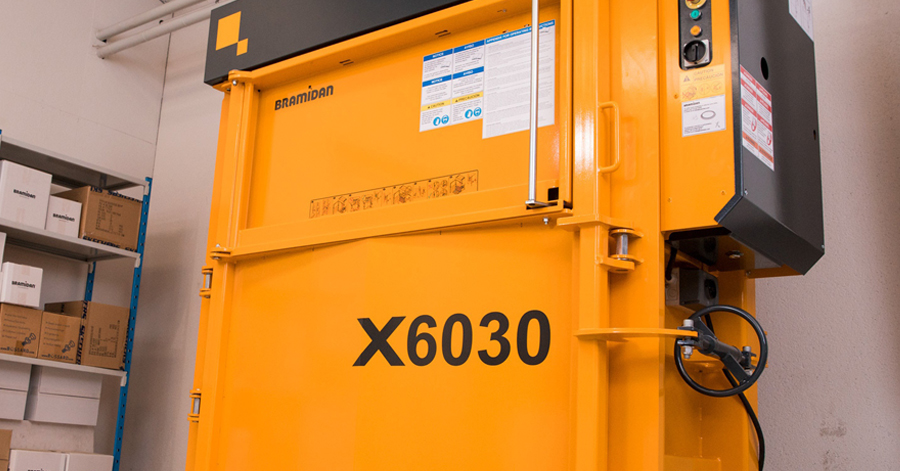When it comes to managing waste and recycling efficiently, selecting the right baler is crucial for any business. Balers can significantly reduce the volume of recyclable materials, making them easier to handle, store, and transport.
However, with so many types of balers available, it can be challenging to determine which one best suits your needs.
This guide will walk you through the essential considerations to ensure you choose the right baler for your operations.
Understanding Your Recycling Needs
The first step in choosing the right baler is to thoroughly understand your recycling needs.
Assessing Material Type
Different balers are designed to handle specific types of materials. Identifying the predominant materials you need to bale will help narrow down your options.
- Paper and Cardboard
- If your business deals with corrugated boxes, office paper, or newspapers, a baler designed for these materials will be necessary.
- Plastics
- For businesses that generate PET bottles, HDPE containers, or film plastics, selecting a baler capable of handling these items is essential.
- Metals
- If aluminum cans, steel cans, or other non-ferrous metals are part of your waste stream, you’ll need a baler with the appropriate compression force.
- Other Materials
- For materials like textiles, foam, or wood, specialty balers may be required.
Determining Volume and Frequency
Understanding the volume of materials you process and how frequently you need to bale them is critical.
- Daily Output
- Low volume: Up to 1000 pounds per day
- Medium volume: 1000-5000 pounds per day
- High volume: Over 5000 pounds per day
- Frequency of Baling
- Continuous operation: For businesses with a constant flow of recyclables.
- Scheduled baling times: Suitable for businesses with predictable recycling schedules.
- Seasonal fluctuations: Some businesses may have varying recycling needs depending on the season.
Types of Balers
Choosing the right baler also involves understanding the different types available and their applications.
Vertical Balers
- Advantages
- Vertical balers are space-efficient and ideal for businesses with limited floor space.
- They are suitable for small to medium volumes of recyclables.
- Applications
- Retail stores, offices, and small warehouses can benefit from vertical balers due to their compact size and efficiency.
Horizontal Balers
- Advantages
- Horizontal balers offer high throughput and can handle large volumes of recyclables.
- They feature automated feeding and tying, making them suitable for high-volume operations.
- Applications
- Large distribution centers, manufacturing facilities, and recycling centers typically use horizontal balers.
Specialty Balers
- Two-Ram Balers
- These balers provide versatility in handling multiple materials and offer high compression force, making them suitable for diverse recycling needs.
- Closed-Door Balers
- Designed with enhanced safety features, these balers provide improved compaction for specific materials, ensuring optimal bale density.
- Auto-Tie Balers
- Auto-tie balers increase efficiency by automating the tying process, making them ideal for high-volume operations.
Key Features to Consider
Several key features should be considered when choosing the right baler.
Bale Size and Weight
- Standard Sizes
- Small bales: 30” x 42” x 30”
- Medium bales: 42” x 48” x 48”
- Large bales: 60” x 30” x 60”
- Weight Considerations
- Lighter bales are easier to handle but may require more frequent transport.
- Heavier bales are more efficient for transportation but may require specialized equipment for handling.
Compaction Force
- Measurement in Pounds per Square Inch (PSI)
- Low force: Up to 30,000 PSI
- Medium force: 30,000-60,000 PSI
- High force: Over 60,000 PSI
- Material Specificity
- Lower force is suitable for materials like paper and plastics.
- Higher force is necessary for compressing metals and dense materials.
Automation and Efficiency
- Manual vs. Automatic Tying
- Manual tying requires more labor but may be sufficient for lower volume operations.
- Automatic tying saves time and labor, making it ideal for higher volume businesses.
- Feeding Mechanisms
- Conveyor belts, hopper feeds, and manual loading options should be considered based on the volume and type of materials being processed.
Durability and Maintenance
- Build Quality
- Look for balers with reinforced steel construction and wear-resistant components to ensure long-term durability.
- Maintenance Requirements
- Regular maintenance schedules, availability of spare parts, and ease of service are important factors to consider for minimizing downtime.
Environmental and Safety Considerations
Balers can have significant environmental and safety implications.
Energy Efficiency
- Power Consumption
- Consider energy-saving modes and efficient motor designs to reduce power consumption and operational costs.
- Environmental Impact
- Choosing balers that comply with environmental regulations can help reduce your carbon footprint and promote sustainability.
Safety Features
- Emergency Stop Buttons
- Ensure emergency stop buttons are easily accessible and have a fast response time to prevent accidents.
- Safety Guards and Fences
- Safety guards and fences can prevent unauthorized access and enhance operator safety.
- Automated Shut-Off Systems
- Features like overload protection and fault detection mechanisms can prevent equipment damage and improve safety.
Cost Analysis
Understanding the costs associated with balers is essential for making an informed decision.
Initial Investment
- Purchase Price
- Compare different models and consider your budget to find a baler that offers the best value for your needs.
- Financing Options
- Leasing versus buying and flexible payment plans can help manage the initial investment.
Operational Costs
- Energy Costs
- Estimate daily usage and explore cost-saving strategies to keep energy expenses manageable.
- Maintenance and Repairs
- Regular service schedules and long-term cost projections should be factored into the overall cost analysis.
Return on Investment (ROI)
- Efficiency Gains
- Labor savings and increased throughput can significantly improve operational efficiency.
- Revenue from Recycled Materials
- Selling bales and recycling rebates can provide additional revenue streams, enhancing the ROI of your baler investment.
Why Choose Nanoia Recycling Equipment
Nanoia Recycling Equipment offers comprehensive solutions tailored to your specific needs.
Comprehensive Solutions
- Design and Fabrication
- We provide custom-built balers designed to meet your unique requirements.
- Delivery and Installation
- Our professional setup ensures seamless integration into your operations.
Ongoing Support
- Financing Options
- We offer flexible plans to suit your budget, making it easier to invest in the right equipment.
- Repair Services
- Our prompt and reliable maintenance services, along with an extensive spare parts inventory, ensure your equipment remains operational.
Expert Consultation
- Industry Expertise
- With decades of experience, our knowledgeable staff can provide the insights and recommendations you need.
- Custom Solutions
- We assess your unique needs and offer tailored recommendations to ensure you choose the right baler for your business.
Contact us today to find the perfect baler for your business and ensure efficient, cost-effective recycling operations.






